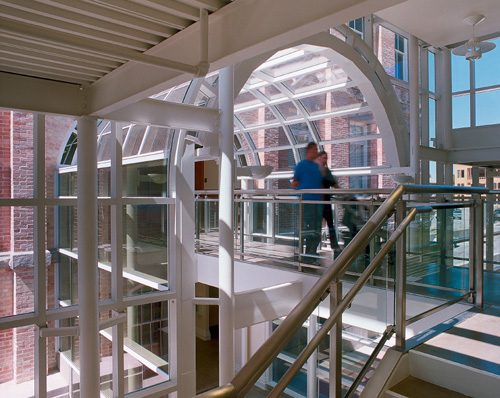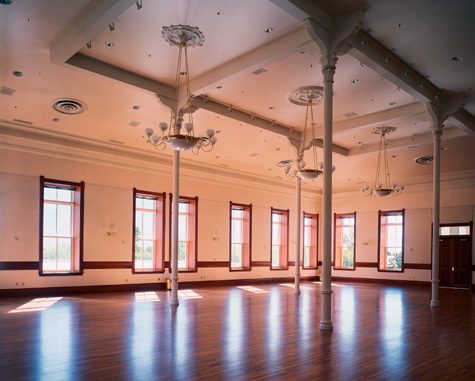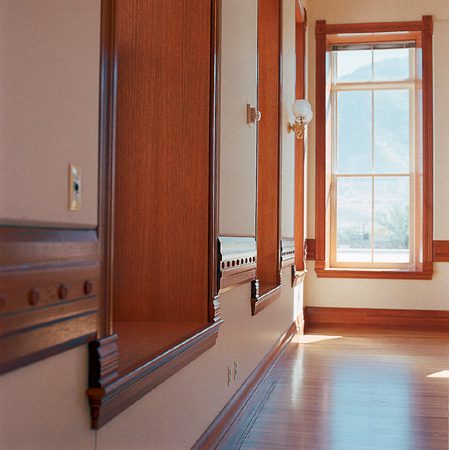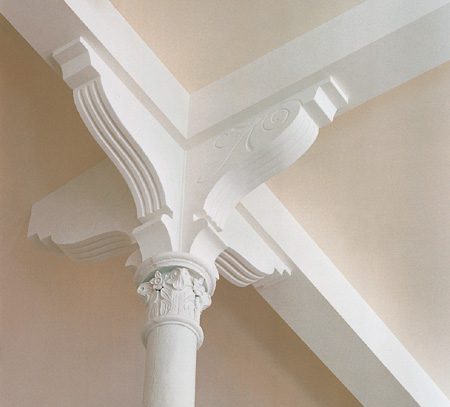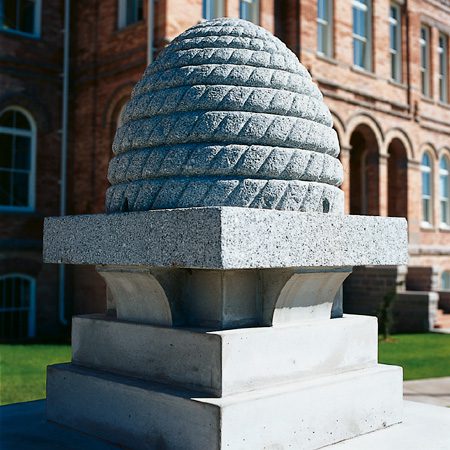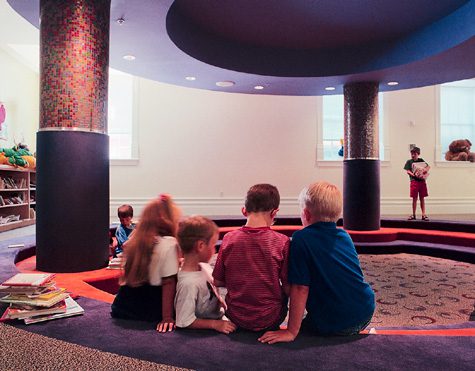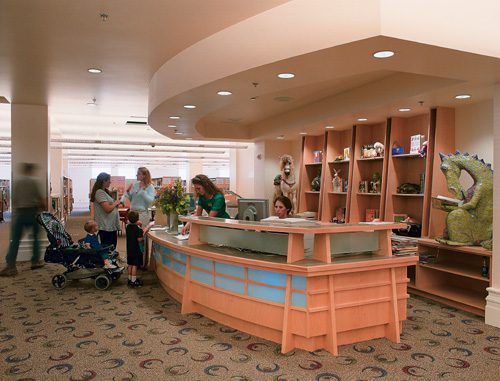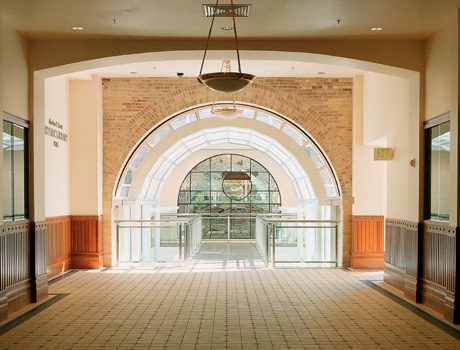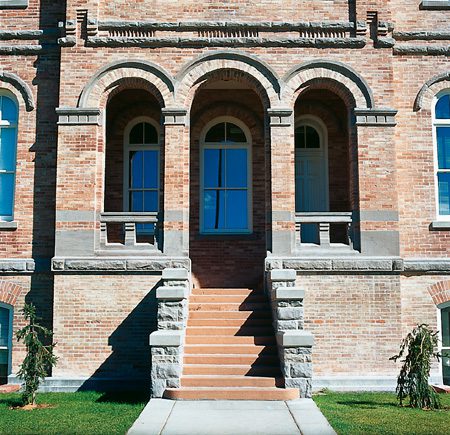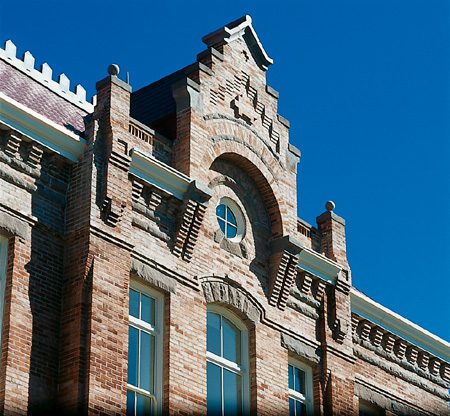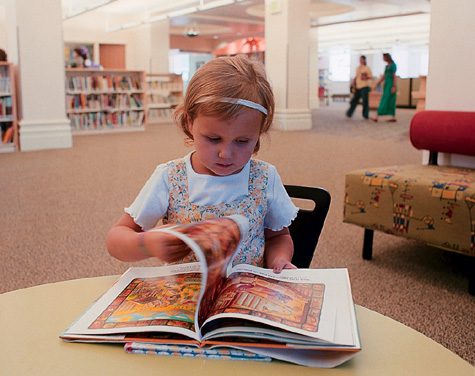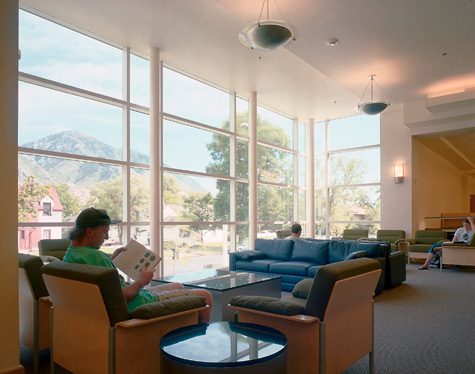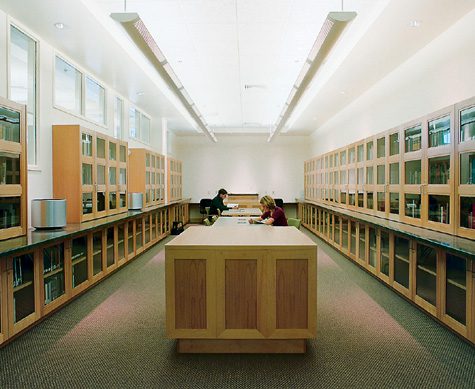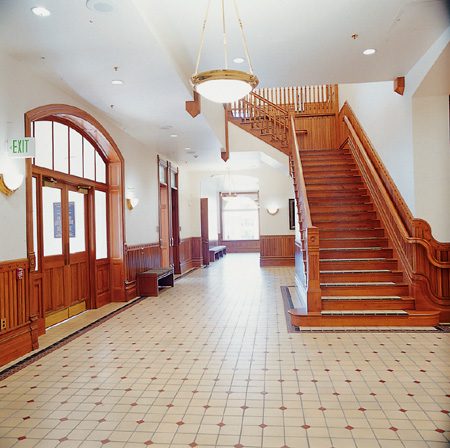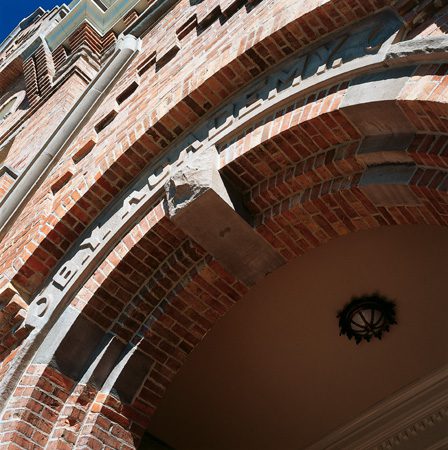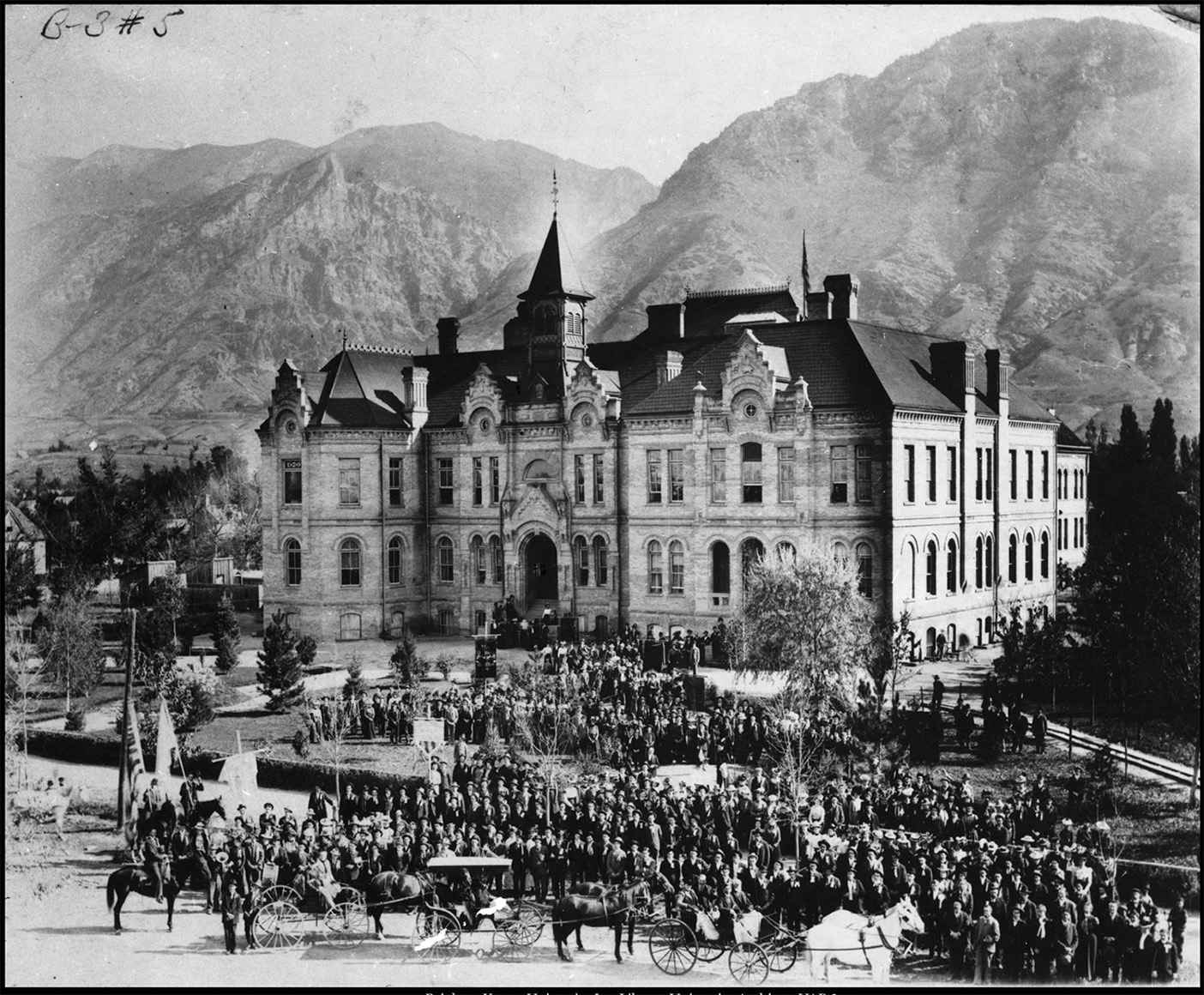
By JeffMcClellan, ‘94, Editor
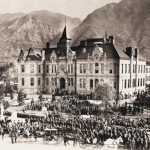
The B.Y. Academy building’s Room D inspires thought.
Four white columns reach more than 20 feet to the ceiling, drawing eyes and minds upward. Thirteen tall windows invite quiet observation of towering mountains. Wooden flooring stretches the length of the grand room, and high walls emphasize the immensity of the space and the smallness of the occupants.
Large spaces and vast views do that. They give the mind and soul room to expand, to grow to fill the cavern, to connect with thoughts and ideas beyond the self. The newly renovated Academy Building has such an effect; it is a structure designed to foster learning.
At the building’s dedication nearly 110 years ago, Karl G. Maeser, then the out-going principal of the school, spoke of a dream he had shortly after Brigham Young’s death in 1877 (“Final Address,” The Normal, Jan. 15, 1892). “I found myself entering a spacious hallway with open doors leading into many rooms, and saw President Brigham Young and a stranger, while ascending the stairs, beckoning me to follow them.” Maeser followed his guides through the building and into a large assembly hall before he awoke. Impressed by the dream, he sketched the plan of the building and “stowed it away without any apparent purpose for its keeping nor any definite interpretation of its meaning.”
When the Lewis Building, which had housed the academy from its inception, burned in 1884, Maeser remembered the dream and the sketch, which he presented to the school’s board. “When in future days,” Maeser told the dedicatory audience, “people will ask for the name of the wise designer of the interior of this edifice, let the answer be: Brigham Young!”
With the reconstruction of the Academy Building, many elements of the original plan have been changed to accommodate building codes and the needs of the Provo City Library. But some features—such as Room D—have been restored much as they were. More remains, however, than just physical characteristics. As W. Eugene Nelson, ’78, library director, has led BYU alumni on tours of the bu ilding, he says most have looked past the differences, remarking that the building feels the way they remember it feeling. Perhaps it is the lofty ceilings. Maybe it is the abundant woodwork and moldings, designed to look as they might have 100 years ago. Or perhaps it is simply areflection of the building’s original designer and purpose. Perhaps it is that this building was destined to be a building of education, and its current use—that of a library and community center—is one of the few ways the space could be faithfully filled.
The Provo City Library at Academy Square is some four times the size of the library’s previous home. In this new space, the library will house more books, more programs, more activities, and—ultimately—more fertile minds than the former edition. Here, in space once occupied by chemistry labs, young children will hear stories. In a new building constructed where College Hall once sheltered theatrical events, students will do research for school assignments. In a ballroom that was once home to dinosaur bones and books, the dancing feet of a new generation will recall festivities of former years. And in front of tall windows, people of all ages will relax with books in their hands and let their minds—and souls—expand to fill space.







